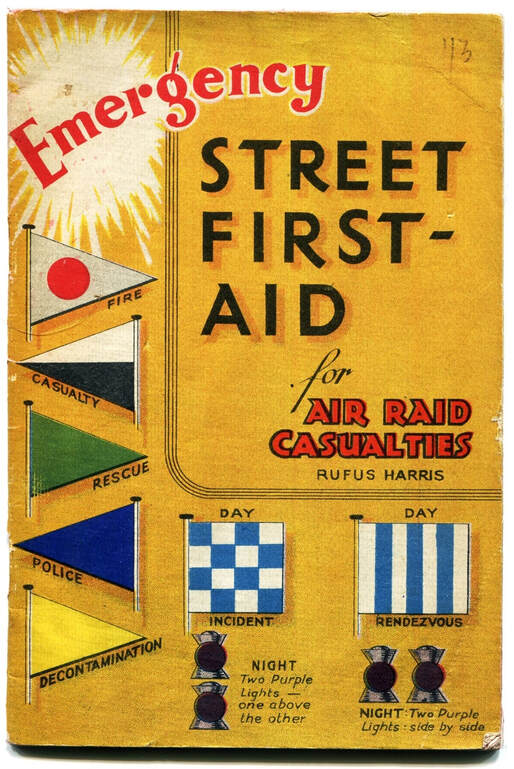|
Something new to me cropped up on a Facebook group over the weekend. Someone posted a few pages from a wartime magazine called the "Police Journal" (dated to the third quarter of 1941) that mentioned individual Civil Defence services would use coloured pennants at incident posts so the service could be quickly identified. The pennants were triangles 12 inches at the broad end and 2 foot long. The colour scheme used:
Ambulance - White with red cross pennant Casualty (First Aid Parties with ambulances) - Black and White divided horizontally pennant Fire - Grey with 6 inch diameter red disc pennant First Aid Parties - White pennant Police - Dark Blue pennant Public Utility Repair / Rescue - Green pennant Decontamination - Yellow pennant How well used this system was is up for debate. It was probably after the major blitz period of 1940 into 1941 that liaison between services was crucial and possibly not very well coordinated initially. The pennants were an attempt to rectify this but with the lessening of raids they perhaps were not widely adopted. To date, there is no photographic evidence of them in use (either training or for an actual post raid incident) The marking of Incident Posts during daylight was with a 3 foot square chequered flag of six inch squares of Cambridge blue and white. The night time marking was two stacked lamps (both blue and purple colours have been mentioned in original references). For major incidents where a large number of services may be called in to assist, a Rendezvous Point may be set up by the police. This is marked by a 3 foot square flag of six-inch wide vertical Cambridge blue and white stripes. At night, the rendezvous point was marked by two blue/purple lamps side by side. Thanks to Graham Murray and Austin Ruddy for the information.
0 Comments
Your comment will be posted after it is approved.
Leave a Reply. |
Please support this website's running costs and keep it advert free
Categories
All
Archives
June 2024
|
|
|
Copyright © 2018–2024
|

 RSS Feed
RSS Feed